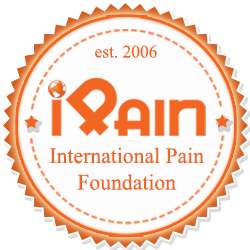Running park trails with chronic pain can be daunting for many, but with carefully thought-out plans and creativity, we can keep enjoying our outdoor activities. These strategies will safeguard your security and comfort and let you experience the benefits of nature as if you are in the forest.
Benefits of getting out in nature and walking on trails
-
Pain Relief
Hiking on trails yields the ability to lower pain by the outflow of endorphins, which are the body’s painkillers. Aside from diminishing cognitive performance and awareness, being in nature can also have a soothing effect on the mind, thus lowering stress levels and pain perception.
-
Improved Mood
Being outdoors, doing physical exercise, and experiencing nature itself act as a natural remedy for depression and anxiety symptoms, more often present in chronic pain patients.
-
Improved Flexibility And Strength
Walking on trails like this stimulates joint therapies, which can bring relief to people who suffer from chronic pain conditions such as arthritis or fibromyalgia. Walking has its benefits of weight management as well, and it lessens the pressure put on your joints.
-
Enhanced Mental Well-Being
Studies have shown that being in nature not only enhances one’s cognitive function, attention span, and overall mental health but also helps in healing anxiety and depression. It may act as a source of tranquil and calm space, creating conditions to help reduce stress and promote relaxation.
How to Stay Safe When Walking on Trails
-
Consult Your Healthcare Provider
Before you do any physical activity, seek medical approval from your healthcare provider for it to be safe for you specifically and receive any other recommendations about what to do during the activity.
-
Select The Right Trail
Make an initial choice of trails that positively suit your fitness level and capabilities. The trails that can be explored should have slight slopes, a level path, and unobstructed space to reduce the chance of an accident.
-
Start Slow And Pace Yourself
Keep the initial walks shorter and then increase the distance or the intensity session by session as you get more endurance. Don’t overdo it, and take time to understand how your body responds to different exercises. Take rests if you feel tired or in pain, and stop exercising when necessary.
-
Wear Appropriate Footwear
Select the shoes that will provide proper cushioning and stability for you. Try to pick the shoes that are comfortable and supportive. It (the adjustable foot-bed) will reduce the chances for foot and joint pain to occur.
Tips for walking trails alone
-
Inform Someone
Tell your friend or relative the plan of walking the old trail alone. Mention how long you’re likely to be gone, your cell phone number, and some emergency contacts.
-
Bring A Cell Phone
Have a fully charged cell phone as a backup in case of emergency. Store it where it is convenient and have the emergency numbers at hand.
-
Be Aware Of Your Surroundings
Be attentive and pay attention to your surroundings at all times. Pay attention to hazards, animals, and suspicious persons around. Listen to your gut and only go ahead if you feel safe during the journey.
-
Pack Essentials
Carry with you some essentials like water, food, sunscreen, mosquito repellent, and a minimal first aid kit. You may want to pack some of the medications or products that relate to your chronic pain disease.
Always enjoy the experience by not sacrificing your safety and health. Through these steps, you will be confident that you are safe and having a good time on nature walking trails. In order to heighten the safety of public parks, it is necessary to pay attention to common park safety rules in particular. These recommendations include more than just the park security measures such as lamping, surveillance cameras, and signs. These actions also help to ensure that the entire park is safe for people of all ages.
Authored by Brittany Cotton
Published by International Pain Foundation, iPain Blog, Team iPain

